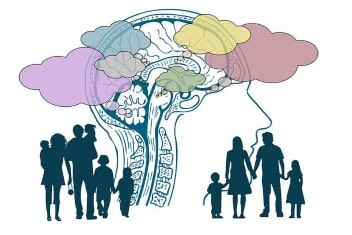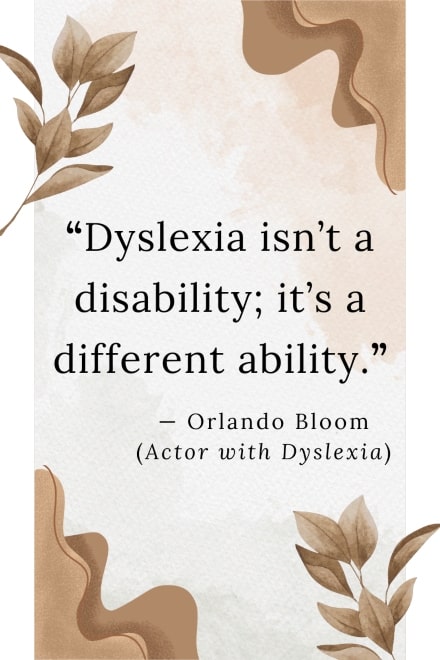
A Journey into Neurodiversity
Welcome to the fascinating world of neurodiversity, where we celebrate the differences in how our brains work. Today, we’re diving into the distinctions and understanding the commonalities between neurotypical & neurodivergent brains.
Together, we’ll explore what goes on in the minds of the people around us, and why some of us seem to think in straight lines while others take a scenic route full of twists and turns.
So, grab a comfy seat, and let’s get started! 🤓
What Do “Neurotypical” and “Neurodivergent” Mean?
Neurotypical (NT):
“Neurotypical” (NT) refers to individuals whose brain functions, behaviors, and thought patterns align with what society considers the “norm.”
This type of brain functioning is characterized by balanced executive functioning, allowing for effective planning, impulse control, and emotional regulation.
Think of it as the default setting on your phone—what most people expect when they think of human behavior.
Neurotypical individuals typically develop cognitive and social skills that match expected milestones, allowing them to navigate social cues, understand nonverbal communication, and adapt to various environmental demands with relative ease.
Nonverbal Communication
Refers to the ways in which people convey information, emotions, and intentions without using spoken words. This form of communication includes a wide range of behaviors and cues, such as body language, facial expressions, eye contact, gestures, posture, tone of voice, and even physical distance between individuals. Nonverbal communication often occurs simultaneously with verbal communication, adding context, emphasis, or nuance to the spoken message.
For example, a person might nod to indicate agreement, smile to express friendliness, or cross their arms to signal discomfort. Nonverbal cues can be powerful in conveying emotions and intentions, often revealing what someone is thinking or feeling even when their words suggest otherwise. Understanding nonverbal communication is essential for effective interpersonal interactions, as it plays a key role in how messages are interpreted and how relationships are formed and maintained.
While the neurotypical brain reflects a common standard, it’s important to recognize that it represents just one variation of human neurodiversity; not a benchmark for what is “better” or “worse.”
Neurodivergent (ND):
On the flip side, “Neurodivergent” (ND) is a term that encompasses a range of differences in how people think, feel, and perceive the world. This includes conditions like Autism Spectrum Disorder (ASD), Attention Deficit Hyperactivity Disorder (ADHD), Dyslexia, and more.
Neurodivergent folks might have unique strengths and challenges compared to their neurotypical counterparts.
Their brains may process information in a non-linear or atypical manner, leading to distinct ways of problem-solving, heightened creativity, or intense focus in specific areas of interest.
At the same time, they may face difficulties with tasks that require sustained attention, social communication, or adaptability to changing environments.
Neurodivergent brain functioning highlights the importance of recognizing and valuing diverse cognitive styles, as these differences contribute to the richness of human potential and innovation.
The Similarities: We’re All Human

Let’s start with what we all share and collectively have in common. 🙂
Whether you’re NT or ND, you have the same fundamental need for empathy and respect. Everyone experiences emotions like joy, sadness, fear, and love. We all seek connection, understanding, and a sense of belonging.
At the end of the day, regardless of whether someone is neurotypical or neurodivergent, we’re all human beings with feelings, dreams, and the capacity for growth.
The Differences: Unique Wiring and Perspectives
Neurodivergent brains often process information differently, which can lead to unique ways of thinking and experiencing the world.
For example, people with ADHD might have a knack for hyperfocus—diving deep into something they’re passionate about, even if they struggle with mundane tasks.
On the other hand, someone with ASD might excel in pattern recognition and have a strong preference for routines.

These differences aren’t flaws or deficits; they’re just variations in how our brains are wired. Imagine if everyone thought the same way—life would be pretty dull, right?
Neurodivergent people can bring fresh perspectives and creative solutions to the table, challenging the status quo and helping us see the world in new ways.
Communication Styles: Finding Common Ground
Communication can be one area where NT and ND individuals might experience some challenges.
For instance, neurotypical folks might rely heavily on social cues and unspoken rules, while neurodivergent individuals might prefer direct and literal communication.
Misunderstandings can happen, but with patience and open-mindedness, we can bridge these gaps.
It’s essential to remember that just because someone communicates differently doesn’t mean their thoughts and feelings are any less valid.
In fact, embracing diverse communication styles can enrich our conversations and deepen our connections with one another.
Strengths and Challenges: Embracing the Full Spectrum
One of the beautiful aspects of neurodiversity is that it highlights the full spectrum of human abilities.
While neurotypical individuals might excel in certain areas, neurodivergent people often have strengths that go unrecognized.
For example, people with Dyslexia might struggle with reading but possess incredible spatial reasoning or creativity.
It’s all about recognizing and valuing these unique strengths, rather than focusing solely on the challenges.
After all, everyone has their own set of talents and hurdles to overcome, and that’s what makes us and our lives beautifully diverse!
The Importance of Inclusion and Acceptance
In a world that often prioritizes conformity, it’s crucial to create spaces where all types of brains can thrive.
Inclusion isn’t just a buzzword—it’s about ensuring that neurodivergent individuals have the same opportunities and respect as anyone else.
This means advocating for accessible environments, understanding diverse needs, and challenging stigmas.
When we embrace neurodiversity, we open ourselves up to a richer, more inclusive society where everyone’s contributions are valued.
It’s not about fitting people into boxes; it’s about celebrating the myriad ways we can think, learn, and grow.
Final Thoughts: We’re All in This Together
So, whether you’re neurotypical, neurodivergent, or somewhere in between, understanding that we’re all part of the same human tapestry is incredibly important.
Our differences are what make us unique and valuable.
Let’s continue to learn from one another, break down barriers, and celebrate the full spectrum of human experience.
Thanks for joining me on this journey into the world of understanding neurotypical and neurodivergent brains. Remember, embracing diversity—of all kinds—is a step toward a more understanding and compassionate world. Let’s keep the conversation going and make sure everyone feels seen and heard.
What are your thoughts on neurodiversity? Have you had any experiences that opened your eyes to the beauty of different ways of thinking? Share your stories in the comments below—I’d love to hear from you!
To support the information shared in the blog post and provide readers with further understanding of the topic of neurotypical and neurodivergent brains, here are some credible research articles and resources:
- Neurodiversity: The Birth of an Idea by Judy Singer – This book, written by the sociologist who coined the term “neurodiversity,” offers an insightful look into the concept and its implications.
- The Neurodiversity Paradigm: Key Concepts and Implications for Practice – An academic paper that explores the neurodiversity paradigm and how it contrasts with traditional views on disability.
- What is Neurodiversity? – A comprehensive resource from the Neurodiversity Symposium, providing an overview of neurodiversity, including its definitions, history, and the perspectives of neurodivergent individuals.
- The Dyslexia Debate by Julian G. Elliott and Elena L. Grigorenko – This book critically examines the concept of dyslexia and the implications of labeling and understanding this form of neurodiversity.
- Understanding and Supporting Neurodiversity in Employment – An article discussing the importance of recognizing and supporting neurodivergent individuals in the workplace.

